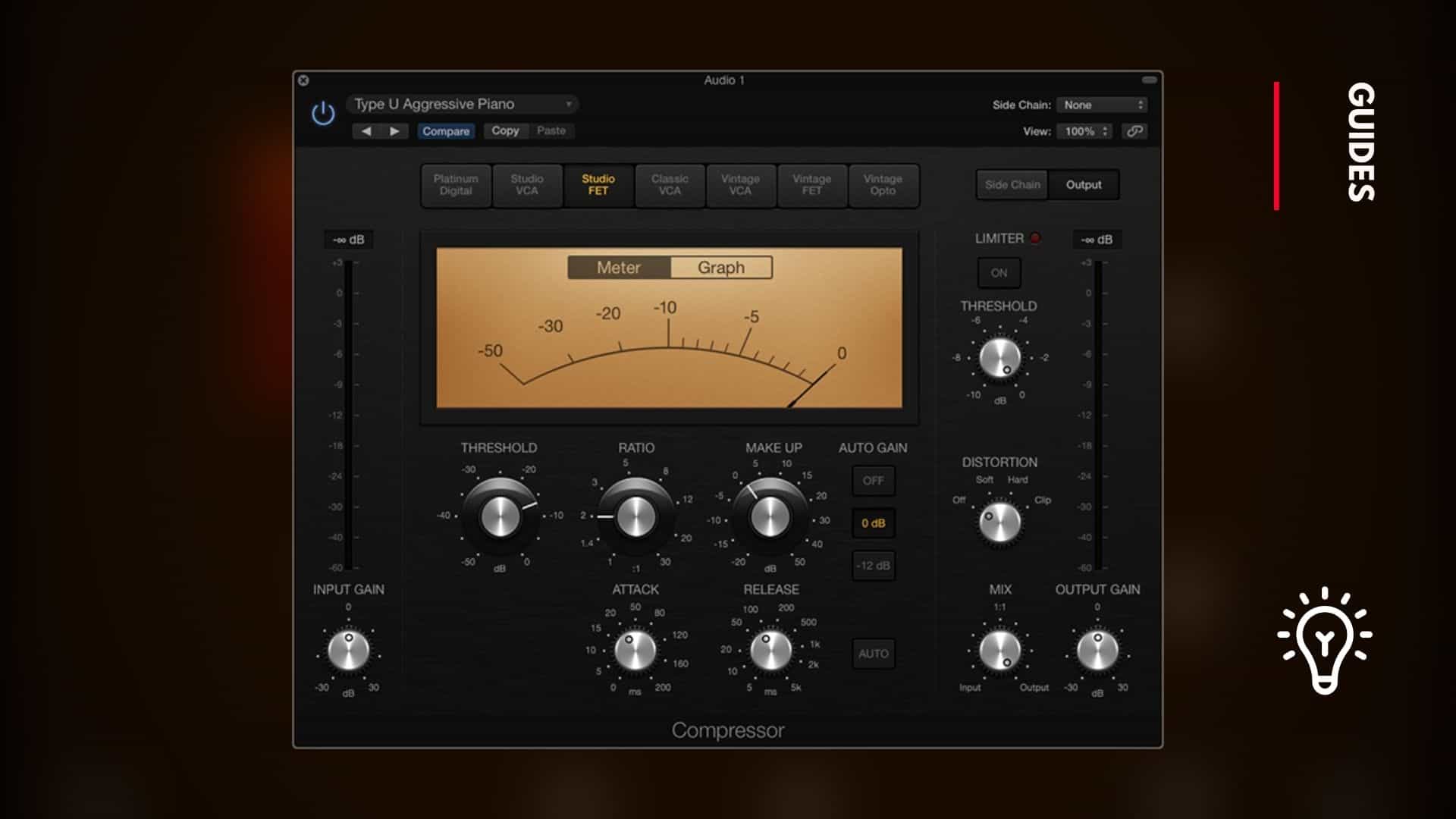

Previously, only cryptic model names distinguished the different types of compressor you could select. One aspect of the Compressor that’s become more apparent is the role and sonic contribution of the model parameter. Likewise a softer release is easy to set as you can almost see the compressor ‘breathing’ in relation to the dynamic envelope of the input.

As such, it’s easy to see how the Attack and Release move in relation to the input.Ī slower attack, for example (which is more forgiving on transients) is easy to fine-tune in relation to the attack transients on the graph. Mapped against the transients of the input, the Graph displays the movements of the compressor over time. Thanks to the new Graph Display feature, though, Logic Pro X’s Compressor is a breeze to set up. One area that can cause confusion is the Attack and Release settings. Once you’ve found your desired Threshold and Ratio, therefore, consider switching Auto Gain to Off and then manually adjusting the Make Up control to ensure consistent output levels with and without compression. That said I often find that the gain Make-Up, though great for auditioning purposes, can be over generous in its output settings. Ideally, you want to achieve some movement both in and out of the Gain Reduction, so that the signal has time being both compressed and un-compressed.Īs you set the compression, note how Compressor’s Auto Gain compensates for any Gain Reduction that’s taken place, letting you hear the result of your Threshold/Ratio settings without having to constantly adjust the output Make-Up control. Starting from a high threshold setting, lowering the threshold will result in more compression being applied, indicated by the aforementioned Gain Reduction meter. Begin by setting the strength of compression you want – varying from a soft and subtle 1.4:1, through to harder-edged compression at 5:1 and almost limiting at 12:1. Setting the Threshold and Ratio on Logic Pro X’s Compressor is easy thanks to the reactive and visually-striking Gain Reduction Meter. As a result of this process a signal will potentially benefit from increased loudness, as well as an increased amount of body and sustain. Put simply, the compressor attenuates loud signals, effectively reducing the dynamic range of the input. Signals that exceed a given threshold are attenuated at an amount defined by the ratio. With this in mind, we thought a revised and in-depth look at Logic Pro X’s Compressor plug-in was perhaps well overdue…Ĭrossing the Threshold The basics of compression, of course, revolve around the interaction between threshold and ratio. It also highlights some key sonic differences between it and the seven other compressor models on offer in Logic.

The compressor will compress both sounds as if it were one, allowing for a tighter and more in-sync bass sound.While the functionality of the latest compressor incarnation hasn’t changed too greatly from the original version, its redesigned GUI offers some key functional improvements in terms of the plug-in’s day-to-day operation. For example, if you have two different bass sounds in your track, it may be a good idea to add them to a Summing Stack and place a compressor on that stack. This is great for tightening sounds and making them sound similar. A plugin on a Summing Stack will read all of the tracks as one track, therefore affecting the different tracks as a whole. Summing Stacks have the same inserts as normal tracks. Summing Stacks give you more flexibility to tweak sounds to your liking. If you’re new to using Track Stacks, we went into depth about the different types in a previous post: “How to Build a Worship Set in Logic Pro”. Let’s look into each one so you can implement it in your music production and build on your existing sounds. Track Stacks and sidechain compression are very useful tools for producing. Published by Loop Community on February 20, 2020
#Logic pro compressor how to#
How to Use Track Stacks and Sidechain Compression in Logic Pro


 0 kommentar(er)
0 kommentar(er)
